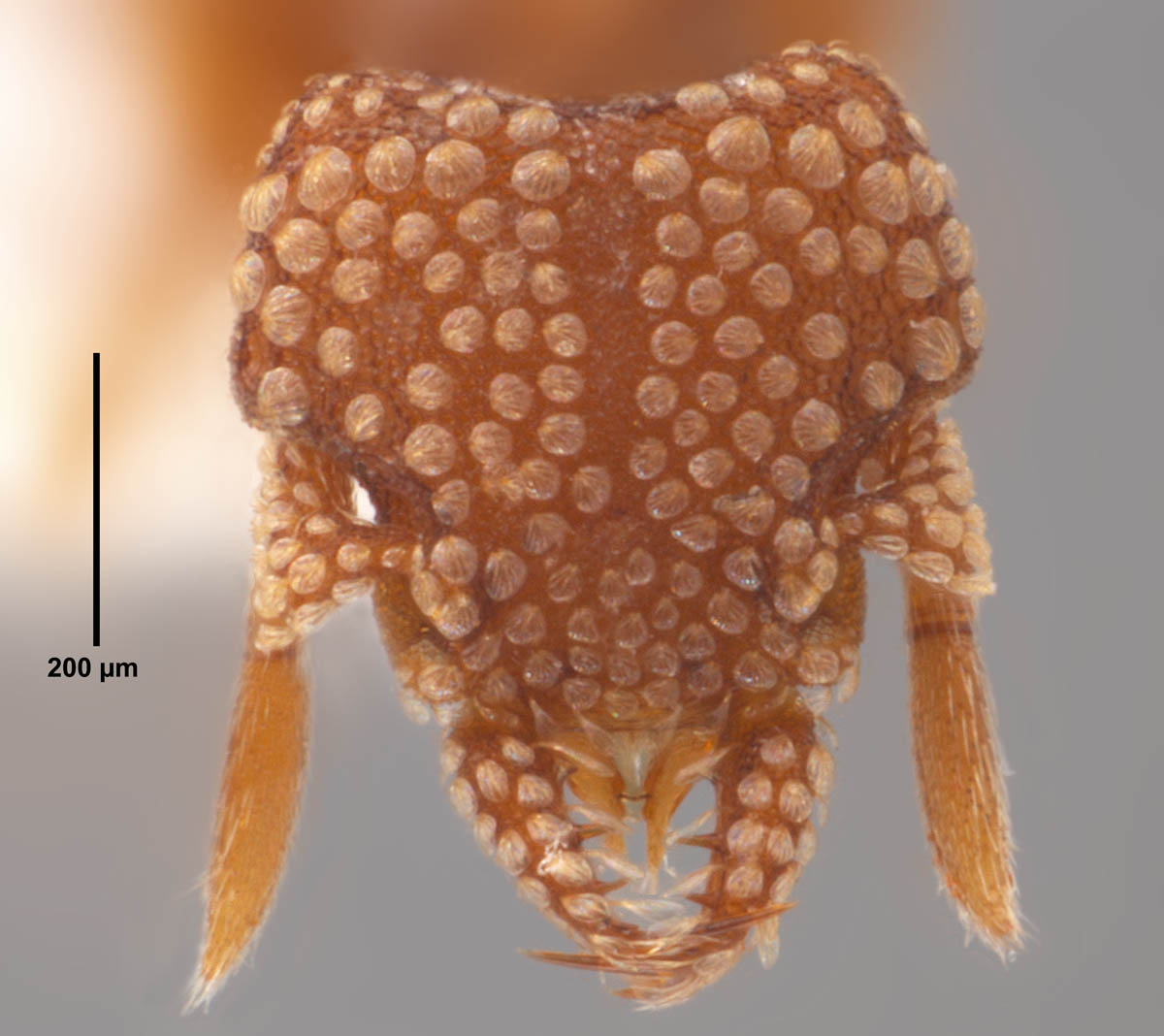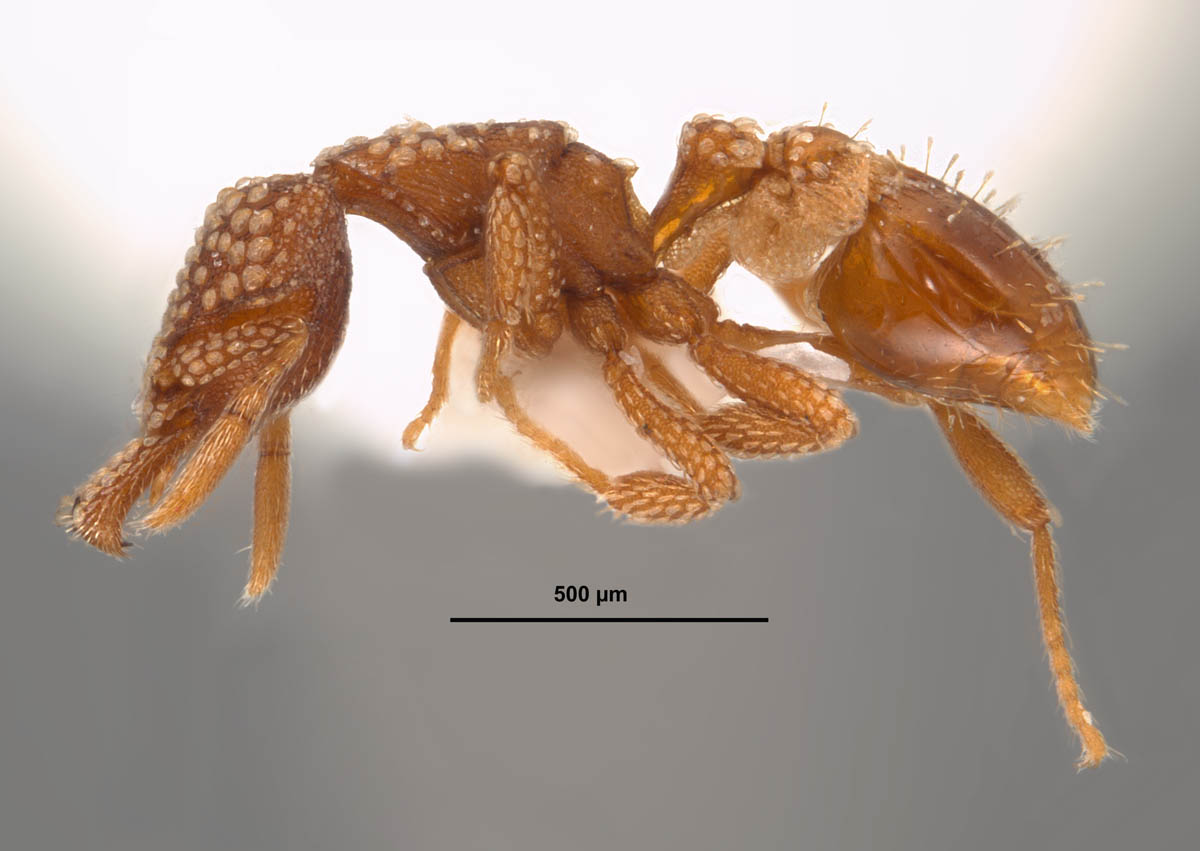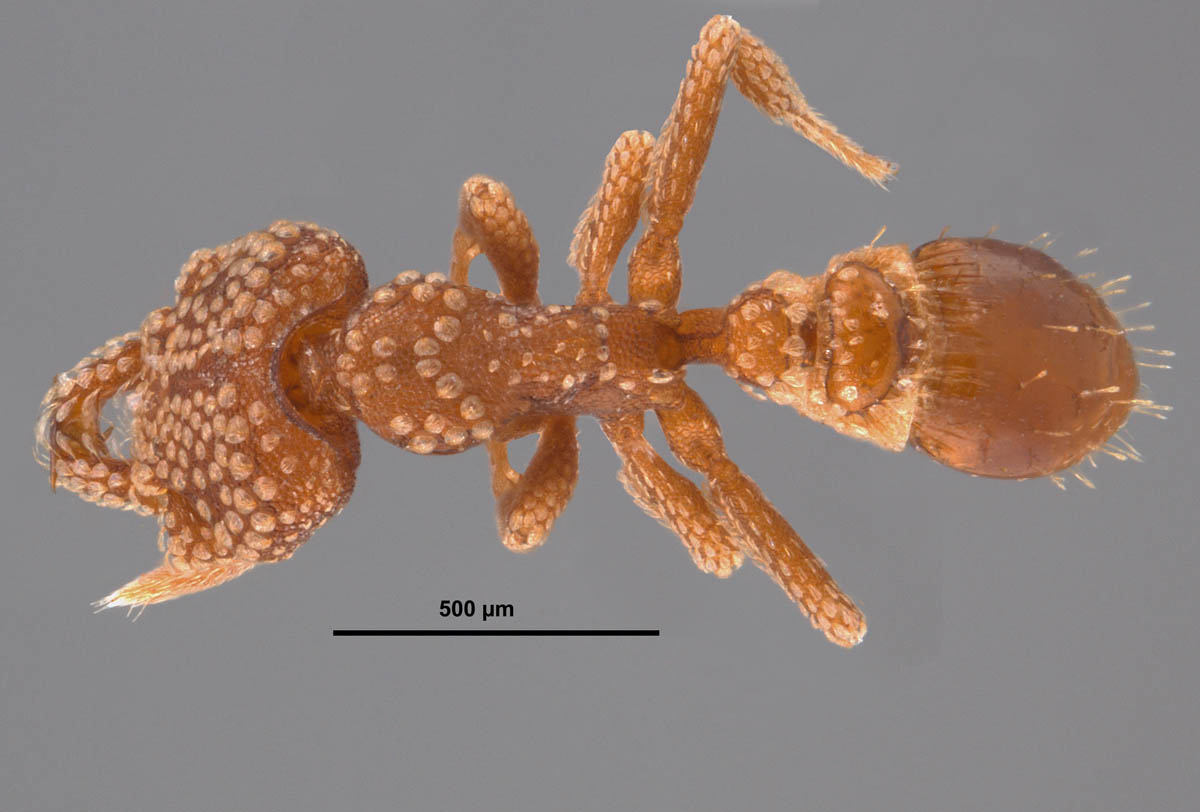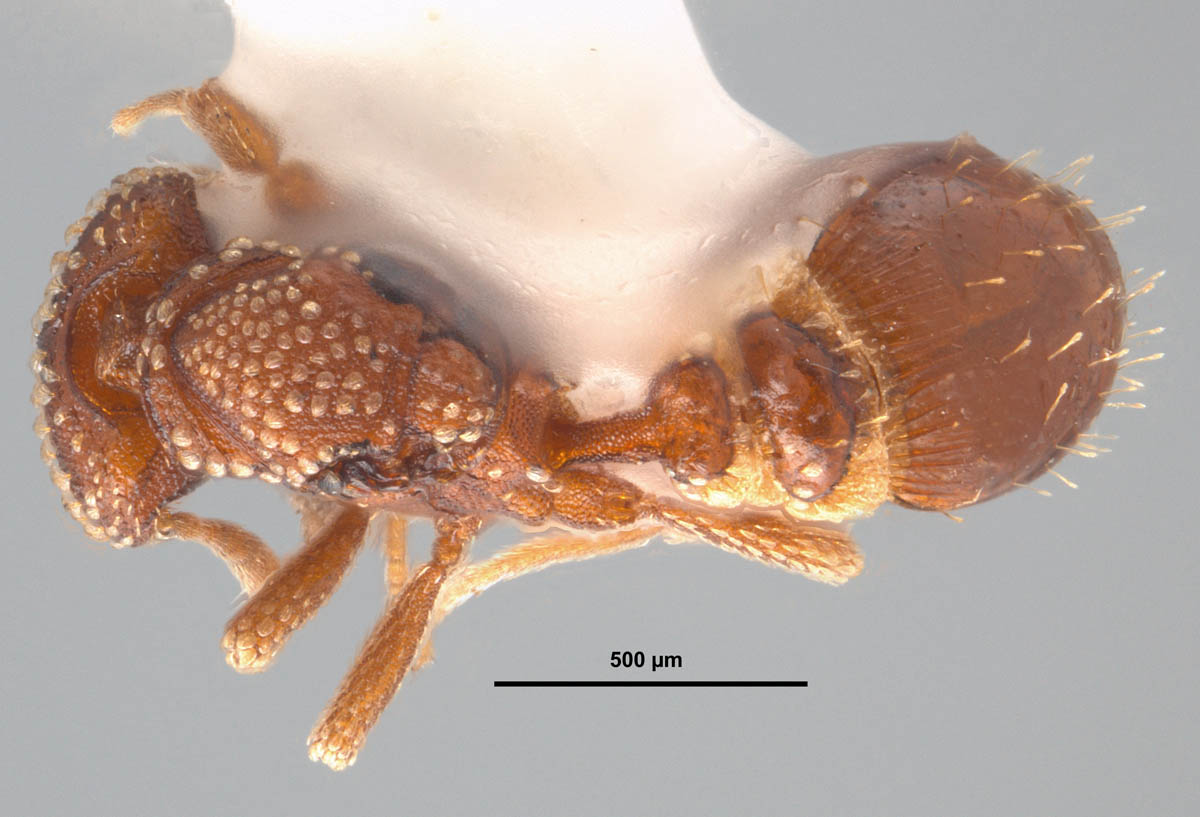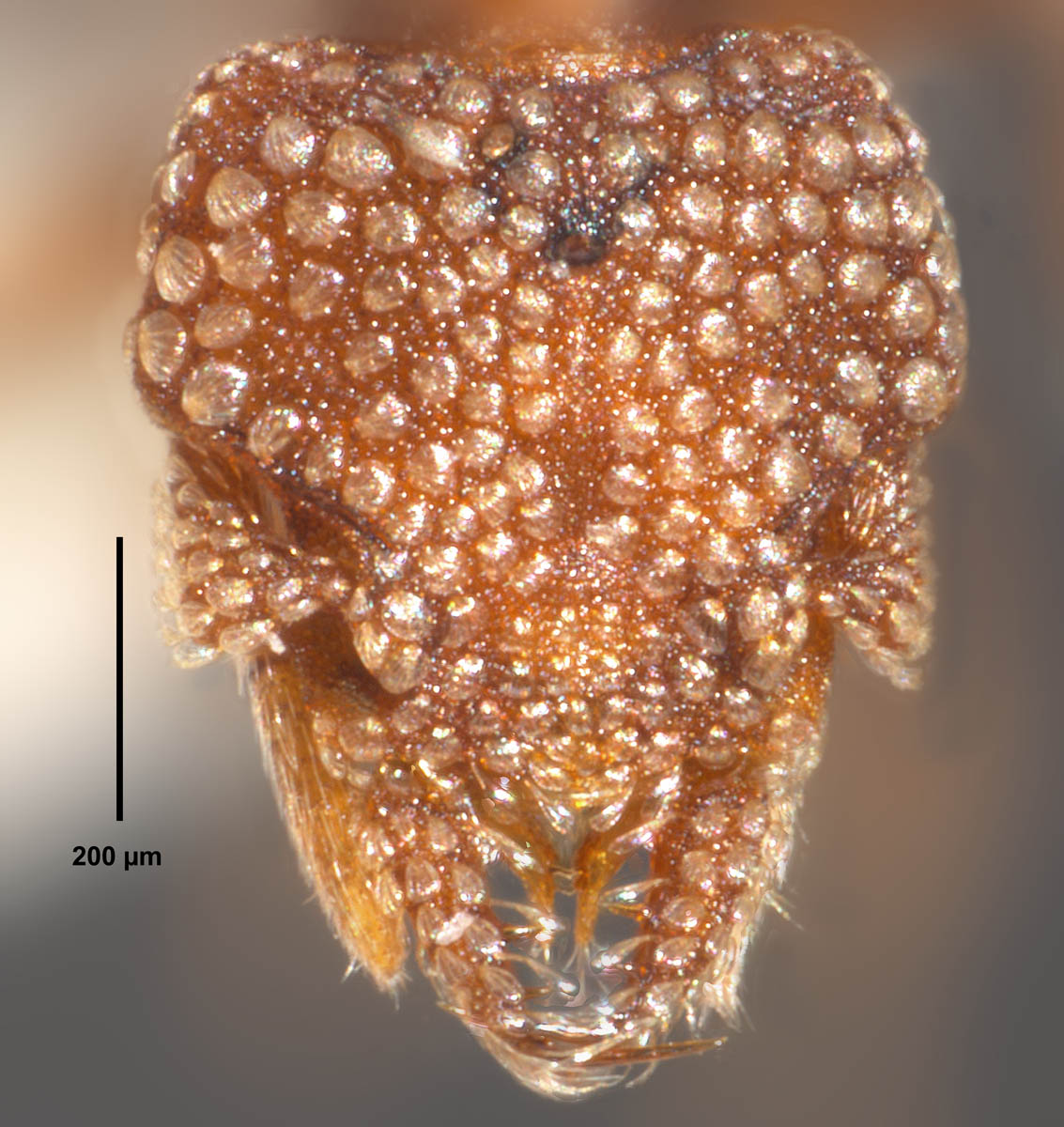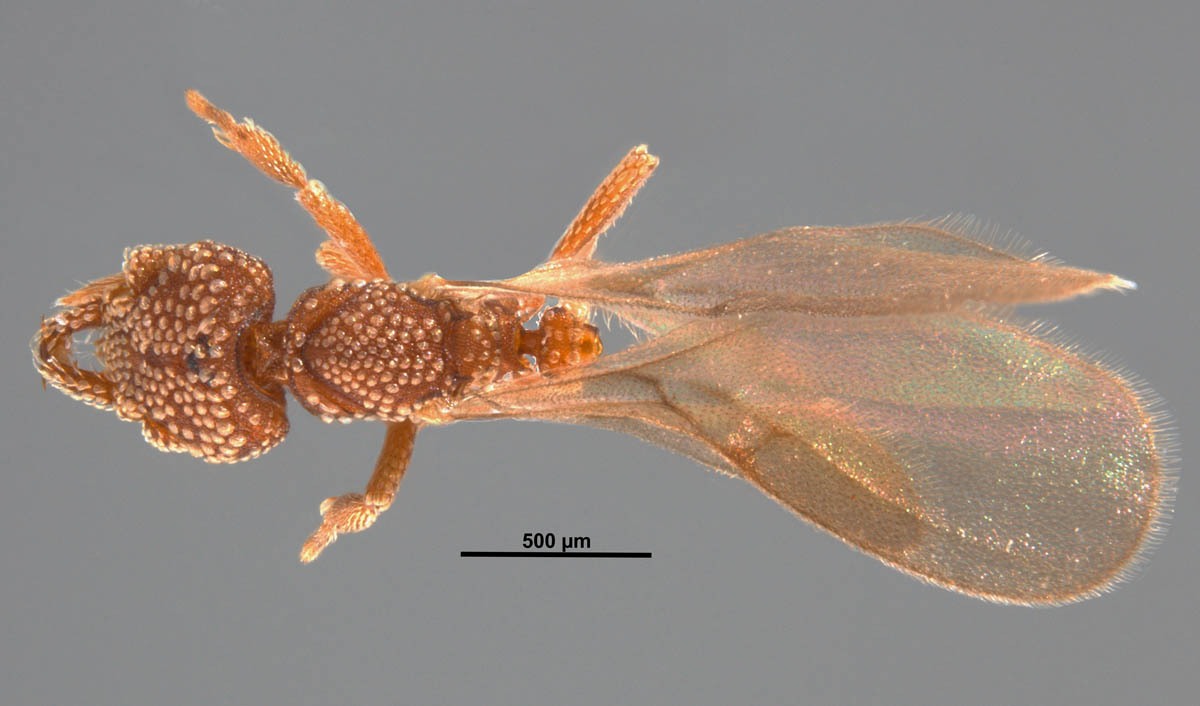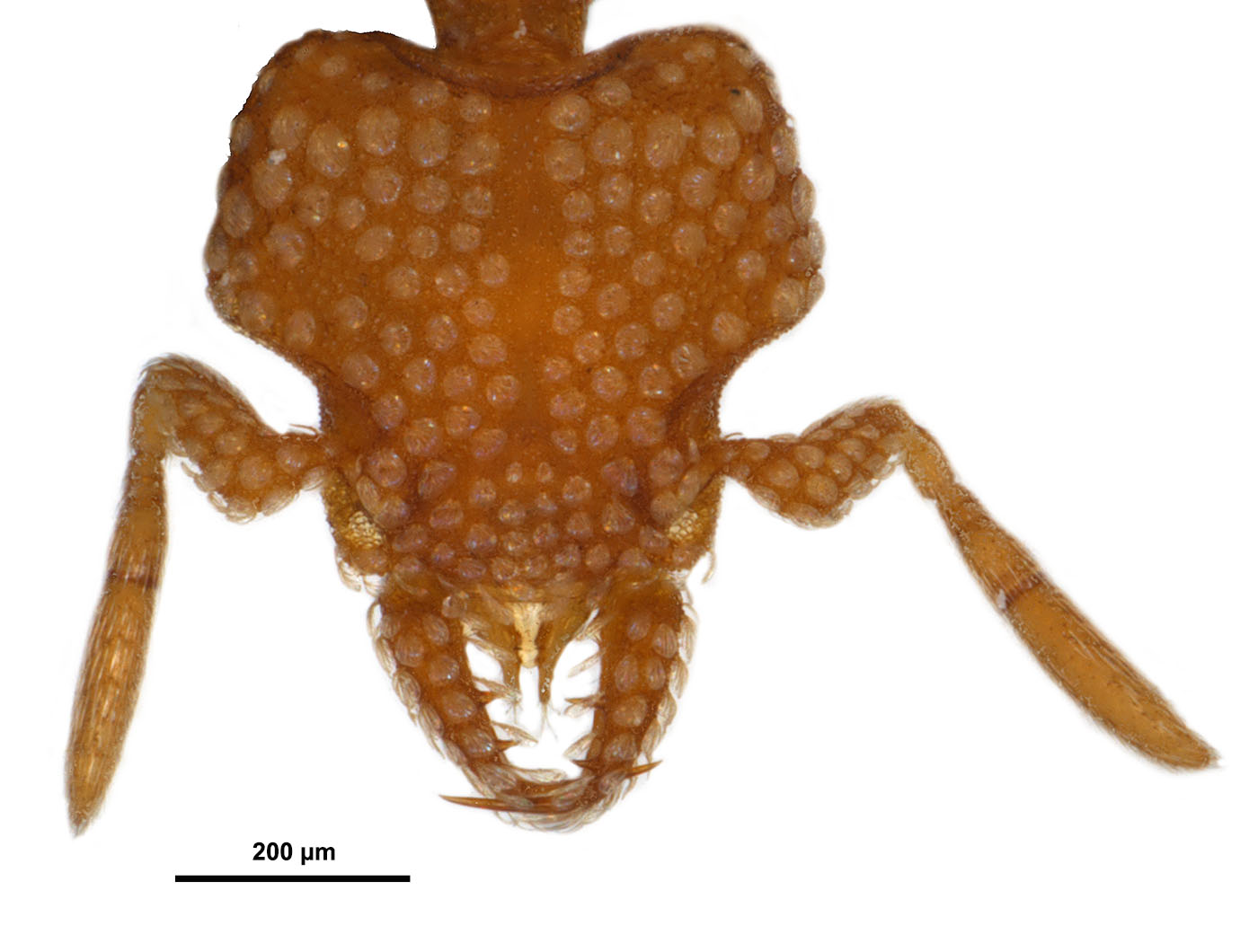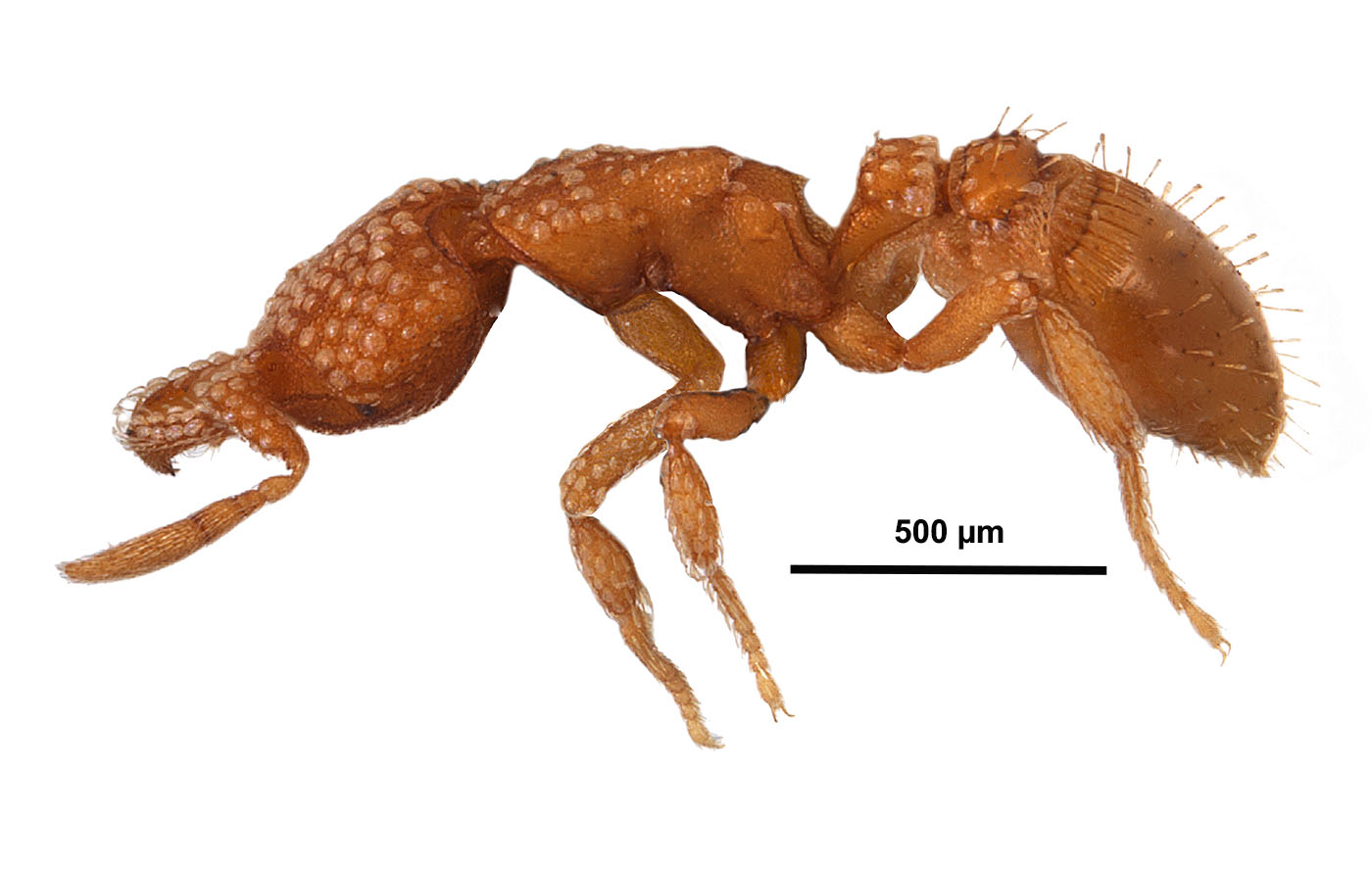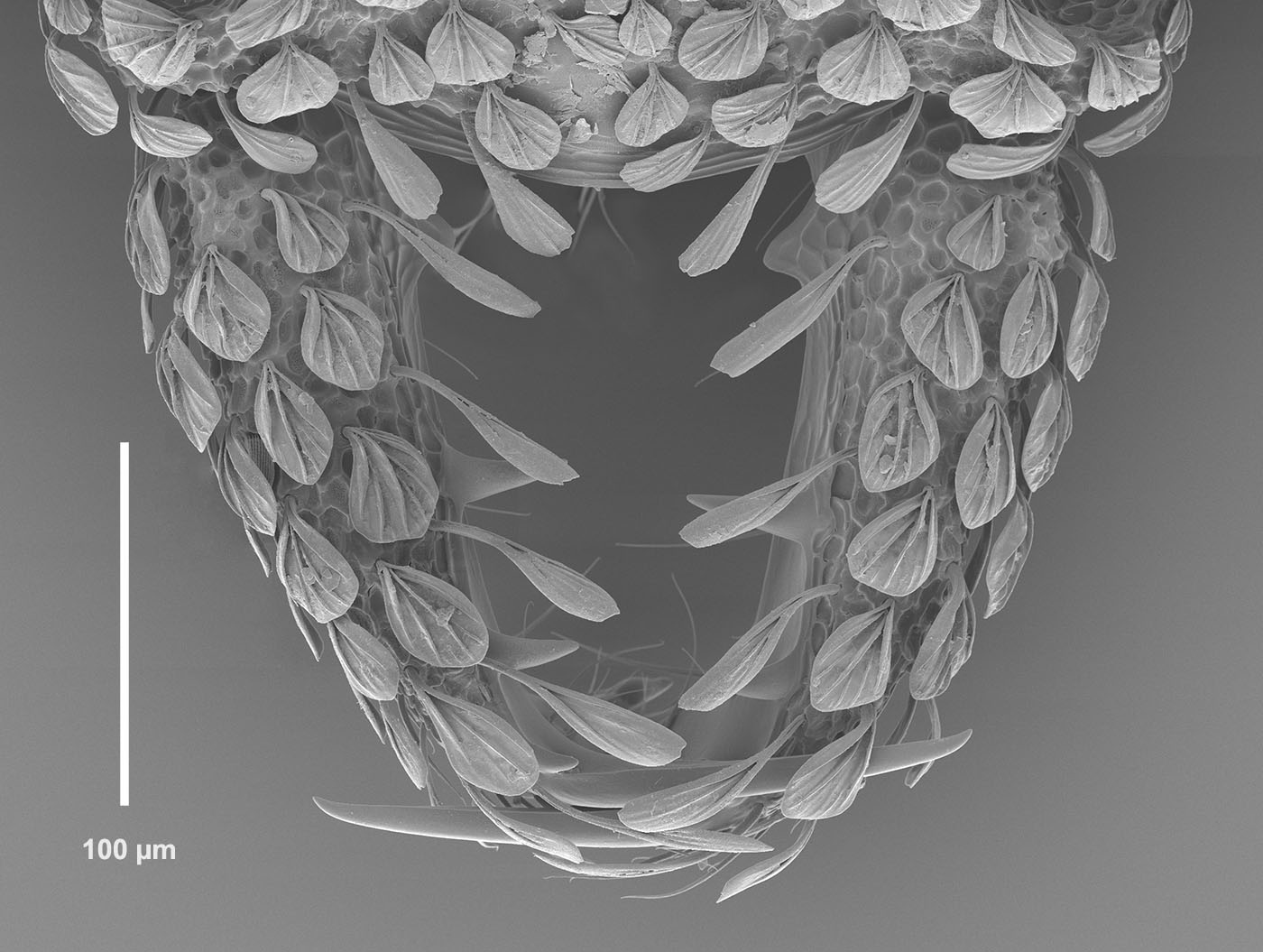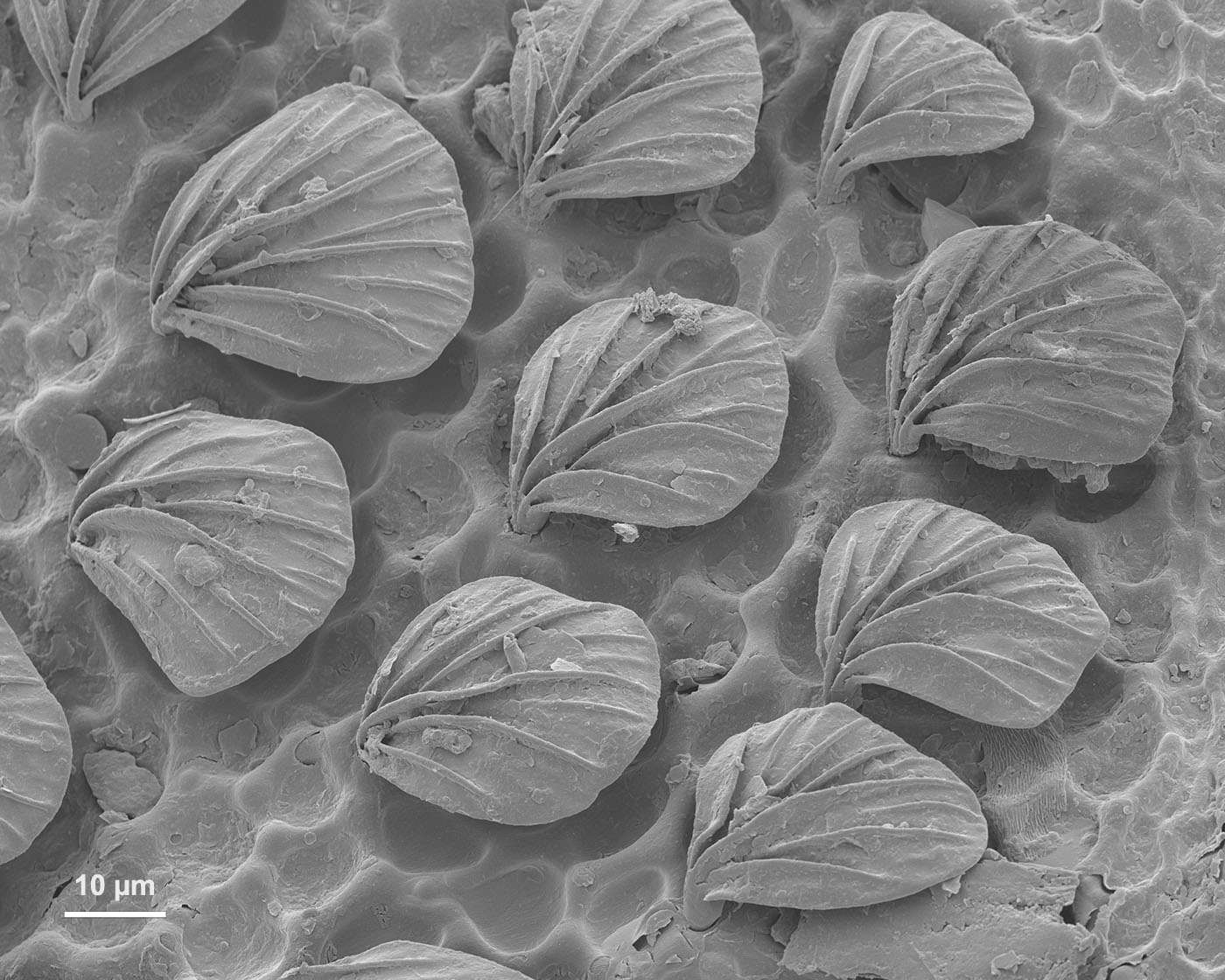Subfamily MYRMICINAE Author: Joe A. MacGown |
||
Strumigenys hexamera, full face view of a worker (MS, Wilkinson Co.) (photo by Ryan Whitehouse and Joe A. MacGown) |
Strumigenys hexamera, lateral view of a worker (MS, Wilkinson Co.) (photo by Ryan Whitehouse and Joe A. MacGown) |
Strumigenys hexamera, dorsal view of a worker (MS, Wilkinson Co.) (photo by Ryan Whitehouse and Joe A. MacGown) |
Strumigenys hexamera, full face view of a dealate queen (MS, Scott Co.) (photo by Ryan Whitehouse and Joe A. MacGown) |
Strumigenys hexamera, dorsal view of a dealate queen (MS, Scott Co.) (photo by Ryan Whitehouse and Joe A. MacGown) |
|
Strumigenys hexamera, full face view of an alate queen (MS, Pontotoc Co.) (photo by Ryan Whitehouse and Joe A. MacGown) |
Strumigenys hexamera, lateral view of an alate queen (MS, Pontotoc Co.) (photo by Ryan Whitehouse and Joe A. MacGown) |
Strumigenys hexamera, dorsal view of an alate queen (MS, Pontotoc Co.) (photo by Ryan Whitehouse and Joe A. MacGown) |
Strumigenys hexamera, full face view of a worker
(photo by Joe A. MacGown) |
Strumigenys hexamera, full face view of a worker
(photo by Joe A. MacGown) |
Strumigenys hexamera, full face view of a worker
(SEM by Joe A. MacGown and Richard L. Brown) |
Strumigenys hexamera, mandibles of a worker
(SEM by Joe A. MacGown and Richard L. Brown) |
Strumigenys hexamera, closeup of scale-like setae (SEM by Joe A. MacGown and Richard L. Brown) |
Strumigenys hexamera, spongiform tissue on waist of a worker
(SEM by Joe A. MacGown and Richard L. Brown) |
Introduction Strumigenys hexamera is a tiny predatory ant that feeds on minute soil arthropods. Originally from East Asia, S. hexamera has been recently introduced to North America, apparently through human commerce. This ant is very distinctive looking with its unique dental array and setal arrangement on the head. Taxonomic History (provided by Barry Bolton, 2013) Diagnosis Identification Queen: Small, slightly larger than worker. Overall reddish brown in color. Head widest posteriorly, edges squared, then abruptly tapering to mandibles; entire head with fine microreticulation; face, clypeus, mandible, and scape with large, appressed, circular, somewhat translucent setae; eyes large, multifaceted, located on side of head beneath antennal scrobe; three ocelli present; antenna 6-segmented, scape short, apical flagellomere greatly enlarged forming a 2-segmented club with preapical flagellomere; mandibles elongate, in full face view only three teeth are visible including two preapical teeth and one elongate apicodorsal tooth which extends beyond the outer margin of the opposite mandible at closure. Entire mesosoma with fine reticulation, dorsum with large, appressed, circular, somewhat translucent setae; pronotum visible dorsally as a "U" shape; pronotum, mesoscutum, and mesoscutellum forming a slightly convex arc, elevated above propodeum; propodeum with a pair of short, triangular spines directed rearward; propodeal declivity with a narrow spongiform lamella. Wings, if present, lacking pigmented veins, short triangular stigma present, with fringe of setae along wing edges apically and on ventral sides of wings to about midway toward base. Waist 2-segmented, with dense microreticulation and with large, appressed, circular, somewhat translucent setae present dorsally; petiole pedunculate, node rounded rectangular in dorsal view, with a narrow curtain of spongiform tissue present ventrally; postpetiole rounded rectangular, about twice as wide as petiole (in dorsal view), with a few scattered erect, apically forked setae present dorsally, and with thick spongiform tissue present posteriorly and ventrally. Gaster shiny, with longitudinal striae present at anterior portions of first tergite; scattered appressed pubescent setae present and scattered erect, apically forked setae present dorsally; sting present. Biology This species is not considered to be a pest species. Its affect, if any, on other native Strumigenys species in the region have not been studied. Distribution Nearctic: United States (AntWeb.org). U.S. Distribution: AL, FL, LA, MS (AntWeb.org and MEM). Southeastern U.S. Distribution: AL, FL, LA, MS (AntWeb.org and MEM). Acknowledgments Literature Cited Baroni Urbani, C. & De Andrade, M.L. 2007. The ant tribe Dacetini: limits and constituent genera, with descriptions of new species. Annali del Museo Civico di Storia Naturale “G. Doria” 99: 1-191. Bolton, B. 1999. Ant genera of the tribe Dacetonini (Hymenoptera: Formicidae). Jour. Nat. Hist. 33: 1639-1689. Bolton, B. 2013. Bolton World Catalog Ants. Available online: http://www.antweb.org/world.jsp. Accessed 16 April 2013. Brown, W. L. 1958 A new Japanese species of the dacetine ant genus Epitritus. Mushi 31: 69-72. Masuko, K. 1984. Studies on the predatory biology of Oriental dacetine ants (Hymenoptera: Formicidae). I. Some Japanese species of Strumigenys, Pentastruma, and Epitritus, and a Malaysian Labidogenys, with special reference to hunting tactics in short-mandibulate forms. Insectes Sociaux 31:429–451. Masuko, K. 2009. Studies on the predatory biology of Oriental dacetine ants (Hymenoptera: Formicidae). III. Predation on gamasid mites by Pyramica mazu with a supplementary note on P. hexamerus. Journal of the Kansas Entomological Society 82: 109-113. Wilson, E. O. 1953. The ecology of some North American dacetine ants. Annals of the Entomological Society of America 46: 479-497. Links |
||


